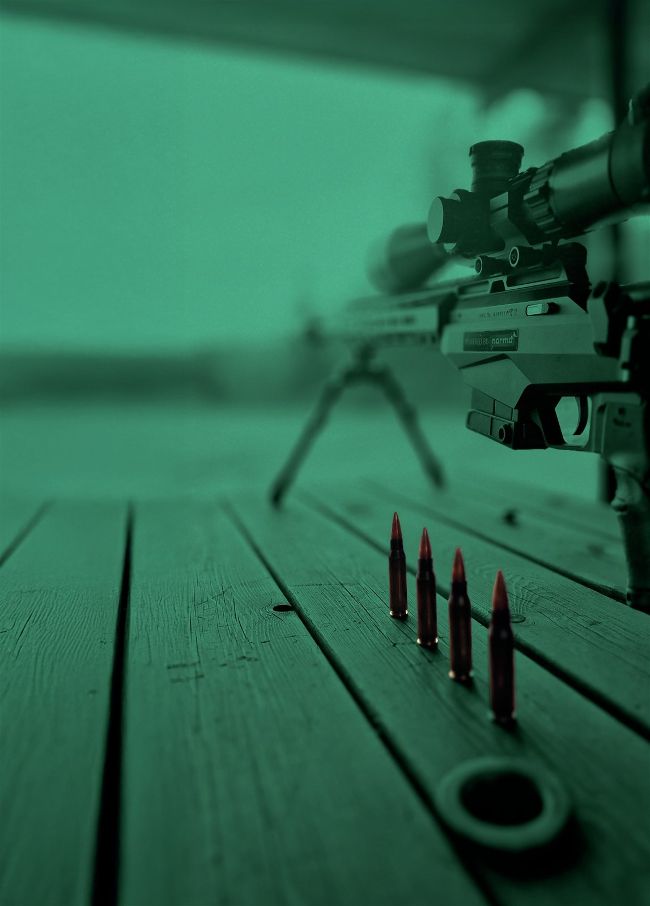UNDERSTANDING THE ROLE OF BRASS IN SHOOTING PERFORMANCE
There is a lot of discussion among shooters regarding what makes good brass. With so many options on the marketplace we are spoilt for choice. Here, Paul Bradley will discuss what he has found to be beneficial and where we may be able to save some money.
Firstly, let’s be honest about our requirements. Do you actually need really good brass? If you are shooting a 2moa capable gun then spending time worrying about your brass is probably time wasted. If your running a straight pull AK build then that steel cased ammunition is probably just fine! The main consideration if the weak point of your precision is the gun, is that the ammunition is safe and works consistently.
Most sporting shooters will of course be using firearms which are capable of greater precision. Sub 1moa is a pretty common setup for most. Brass quality now becomes more important. Choosing a manufacturer for your factory ammunition should be driven by the quality and consistency of the product, not the glossiness of their latest advertising campaign.
Brass is an alloy of Copper and Zinc. The purity of these materials and the ratio of the alloy, are the first vital factors. Without a consistent source of raw material, you can never produce a good end product. Quality raw materials are never cheap so the likelihood is that good brass is going to occupy the medium to high price range in the market place. No surprises there. The next stages will be the processing of the brass. While the drawing of brass is fairly simple in mechanical terms, the more nuanced variables become important factors. Companies with a long heritage in the manufacture of cases will have some wise old experts whose experience trumps any academia.
All manufactured products have a dimensional tolerance. This is especially so for ammunition which is bound not just by the manufacturers spec but also by CIP, SAMMI or NATO. One could sit on the low side of tolerance, in the middle or to the high side. The smallest dimensions within the tolerance represent the lowest risk but also the lowest chance of a great end product. The case being able to move slightly in the chamber will not provide perfect alignment of projectile to the bore. As we increase size to the highest side of dimensional tolerance, the risk of being out of regulated spec goes up but the probability of a performance end product increases. This is another reason why great brass costs more money. Companies such as Swiss P and RWS run at very tight tolerances and must have enhanced quality testing in order to minimize scrap rates.
The inner dimensions are just as important. A consistent case volume will produce a tighter velocity spread. The thickness and structure of the case itself will affect how it fireforms within the chamber. Fireforming is where the brass case expands under pressure to the upmost limits of the chamber. The dimensions must be tight for both pre and post fireforming.
Lastly, we have the annealing process. Brass cases may be annealed once or multiple times during the manufacturing process. Annealing softens the brass making it more supple. Working brass makes it harder (work hardening). We want the neck of our case to be supple and have some spring to it. This allows the neck to stretch around an inserted projectile achieving an interference fit with enough retention to prevent movement during shaking, vibrations and blunt force (chambering). Most importantly the extraction force must be consistent as this will affect pressure and thus velocity. The case head, which retains the primer is normally not annealed. Retaining hardness in this area is important to prevent the primer pocket from enlarging during the fireforming process and to ensure the rim will be hard enough to withstand the extractor dragging the case out.

Most of the large, brand name producers make acceptable brass. A small handful make exceptional brass. This is very important for those that buy brass with reloading in mind. The reloading process is particularly demanding on cases as they will be fired, reformed and fired again. Many reloaders will repeat this cycle multiple times. Every time the brass expands it flows forward somewhat. The case walls get slowly thinner and elongate at the neck. Reloaders will then trim the neck back to spec length and load again. Using less than exceptional brass for multiple reloads can lead to dangerous failures. The case walls can become so thin that they rupture.
A buyer can test their brass in a number of simple ways. The first and easiest is a visual inspection. If the brass looks consistent and the form factor appears crisp and well made then you are off to a great start. Burrs and dents are undesirable. Measuring the basic dimensions with a Vernier caliper is another easy option. You can check internal dimensions, but you will sacrifice a few primers in the process. Water can be added and the brass weighed using an accurate scale. This will let you know if you have consistent internal dimensions. Brass cases can also be weighed on their own to see if weight differs. Dimensions and weight can be checked for full built ammunition as well but it becomes harder to define if any inconsistency is due to the brass or other components.
In summary, good brass is never cheap to purchase due to the vast amount of time and effort that goes into making it. If you need high levels of precision, it is a vital component which you cannot afford to cheap out on. The same goes for relaoders: the increased demand for longevity requires a higher end product. For those that want to plink or shoot low accuracy firearms, you can get away with mediocre. The system is only as good as its weakest component.
We’d love to hear your thoughts on this topic, e-mail your views over to editorial@twsgroup.com